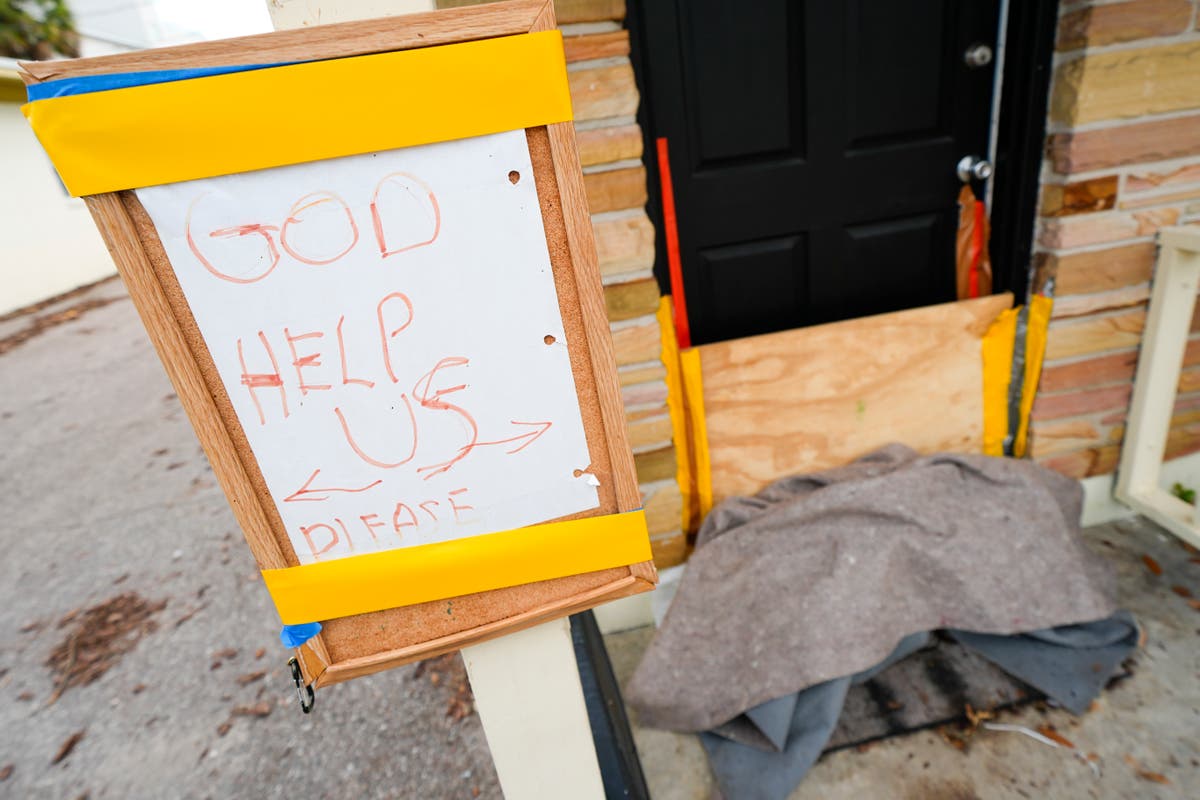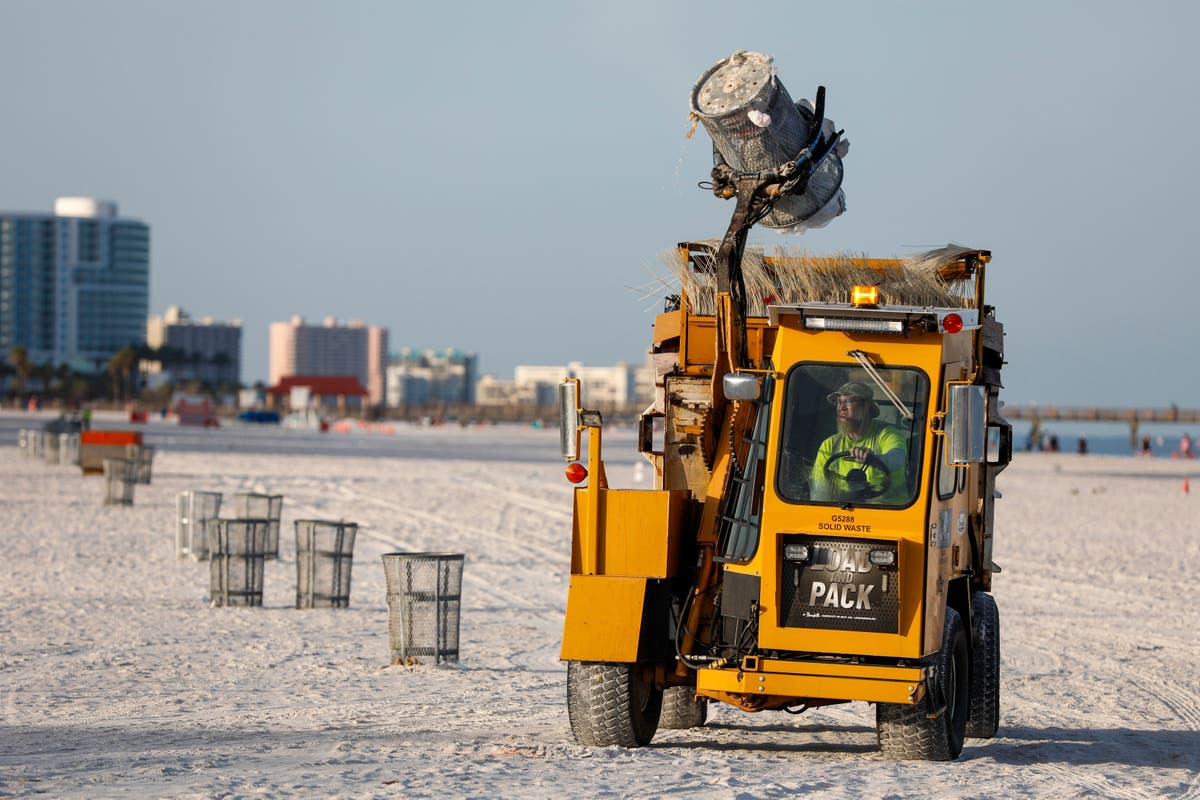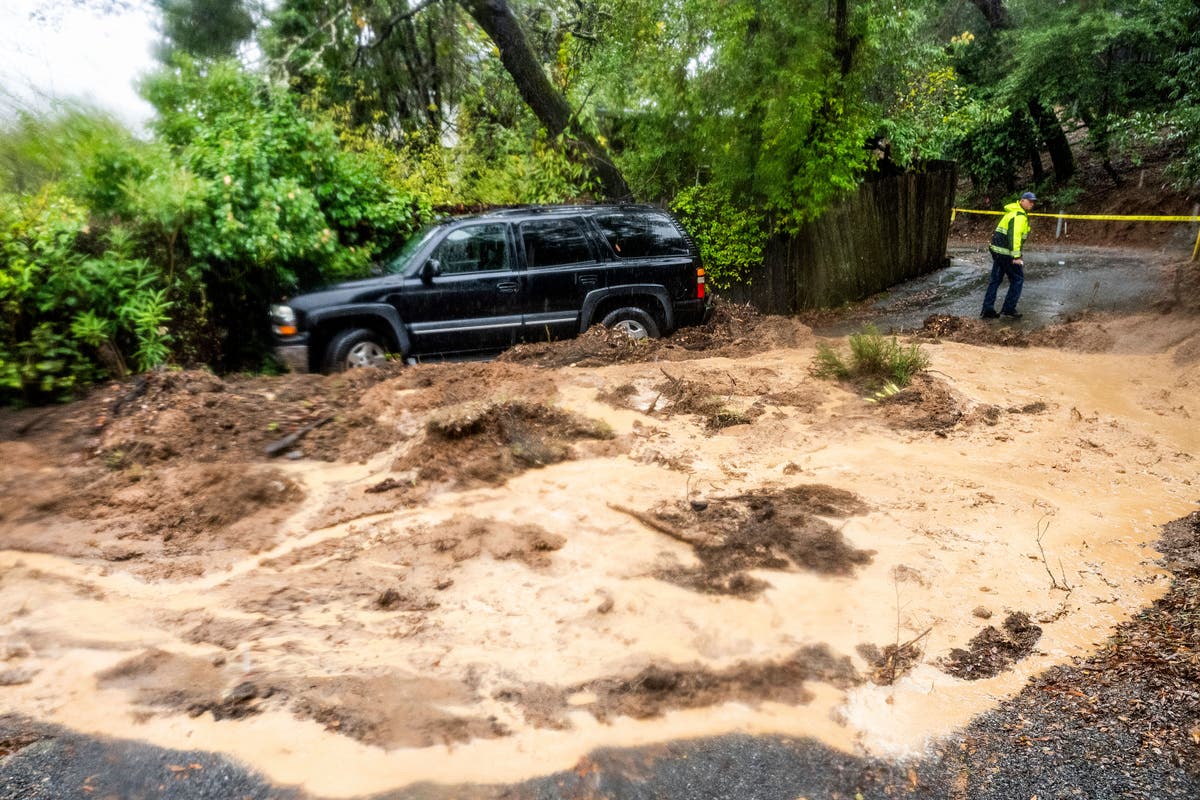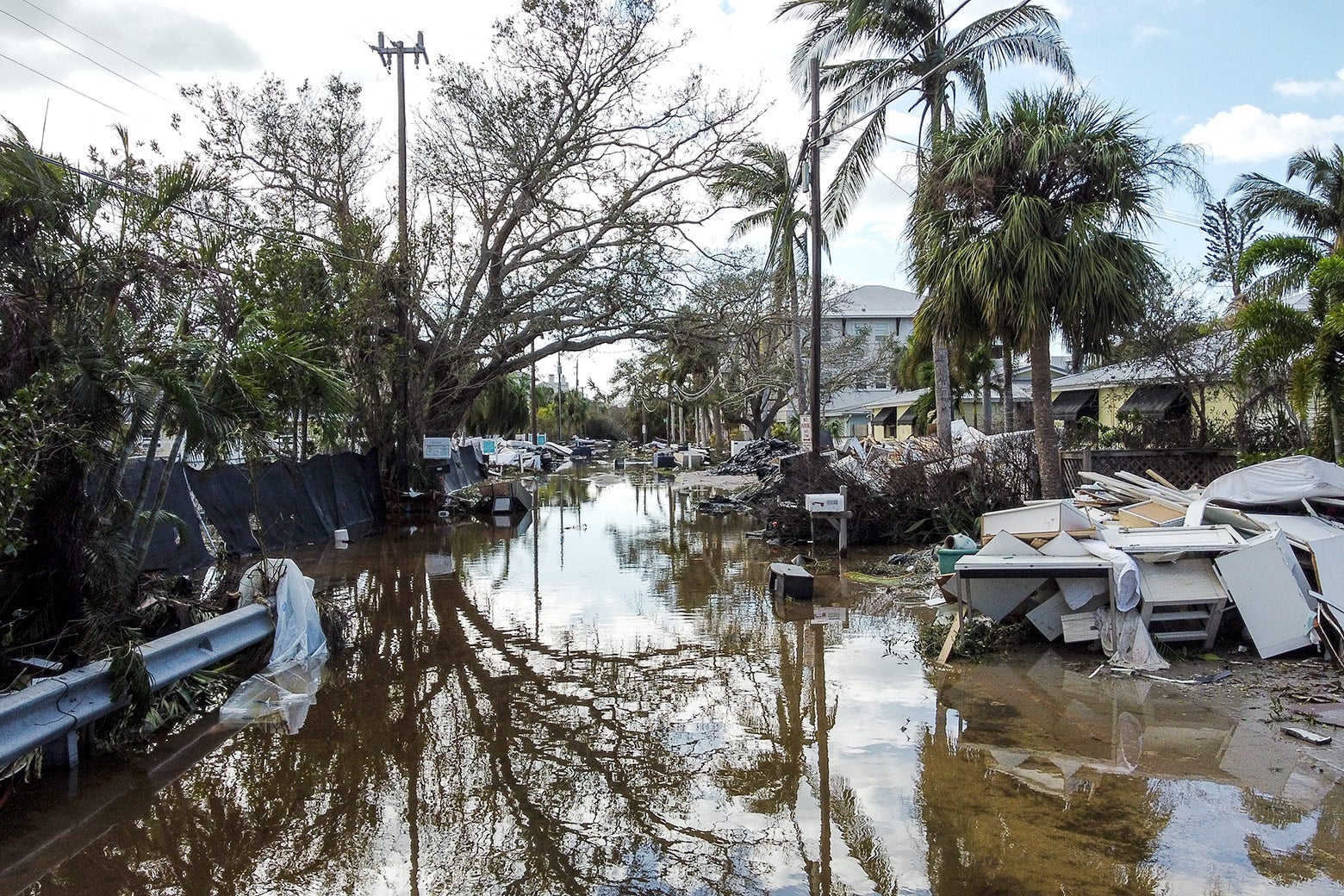How Florida’s capital city was spared more damage from Hurricane Idalia
Associated PressATLANTA — In the final hours before Hurricane Idalia struck Florida the storm had grown into a Category 4 beast lurking off the state’s west coast, and the forecast called for it to continue intensifying up until landfall. “Eyewall replacement cycles are common in major hurricanes, and so when you see that, it does lead to some temporary weakening,” said Kelly Godsey, one of the meteorologists tracking the storm at the National Weather Service in Tallahassee, where his colleagues slept inside the weather office so they could be at work in case the city was devastated. Instead of striking the capital city, it wobbled to the north-northeast and made landfall near Keaton Beach, Florida, the Hurricane Center announced at 7:45 a.m. “Had that turn not occurred, there would have been much more devastating impacts here in Tallahassee,” Godsey said. Despite the eyewall replacement cycle’s effects, Idalia was still a major hurricane threatening storm surges of up to 15 feet along some parts of Florida’s coast. “It’s interesting that we had a drought of major hurricanes making landfall from 2006 to 2016, but since the 2017 season, we’ve had six major hurricanes make landfall across the Gulf Coast,” said Michaelis, who added that the location where Idalia made landfall in Big Bend Coast, Florida, rarely sees a direct hit from hurricanes.
History of this topic

Watch: Hurricane Milton makes landfall in Florida as Tampa hit by flash floods and ‘catastrophic’ winds
The Independent
Why Tampa Bay is at such high risk for hurricane damage
NPR
‘Exposed, inexperienced’ Tampa in the eye of the hurricane for the first time in more than a century
The Independent
Florida communities hit by 3 hurricanes in 13 months grapple with how and whether to rebuild
LA Times
Tropical Storm Debby moves through Gulf toward Florida with hurricane warnings
The IndependentTropical Storm Debby moving through Gulf toward Florida with hurricane warnings
Associated PressBattered by Hurricane Idalia last year, Florida village ponders future as hurricane season begins
Associated Press
It's not a matter of if a hurricane will hit Florida, but when, forecasters say
The Independent
Storms slam parts of Florida, Mississippi and elsewhere as cleanup from earlier tornadoes continues
The Independent
Watch a tornado rip through Fort Lauderdale as storms move across Florida in dramatic video
Hindustan TimesNo power and nowhere to stay as rural Florida starts recovering from Hurricane Idalia
Associated Press
Florida's residents return to find homes gone, towns devastated in path of powerful hurricane Idalia
India TV NewsTampa Bay area gets serious flooding but again dodges a direct hit from a major hurricane
Associated Press
Hurricane Idalia makes landfall in Florida with ‘catastrophic storm surge’
The Independent
Idalia extends its destruction along the southeastern U.S. coastline
NPR
Hurricane Idalia's aftermath: Florida rushes to restore power and clear debris
NPR
Hurricane Idalia, downgraded to tropical storm, kills three in southeast US
Al Jazeera
Hurricane Idalia: Florida residents share heartbreaking photos of storm damage
The Independent
Webcam footage shows Gulf Coast town entirely underwater as Hurricane Idalia barrels ahead
Raw Story)
Hurricane Idalia makes landfall on Florida's west coast as a dangerous Category 3 storm
Firstpost
Hurricane Idalia makes landfall in Florida as category 3 storm
Hindustan TimesHurricane Idalia hits Florida with 125 mph winds, flooding streets, snapping trees and cutting power
Associated Press)
Hurricane Idalia strengthens en route to Florida, expected to land as Category 4 storm
Firstpost
Florida braces to face powerful 155 kmph Hurricane Idalia, NASA releases horrific view from space
India TV News
What we know about the damage in Florida from Hurricane Idalia
NPR
Hurricane Idalia strengthens to category 4 storm as it nears Florida
Al Jazeera
What you need to know as Hurricane Idalia nears Florida
Al Jazeera
Florida braces for Hurricane Idalia as storm builds over warm Gulf waters
Al Jazeera
Photos: Hurricane Idalia unleashes fury on Florida, southeast US
Al Jazeera
Hurricane Idalia hits Florida with 125-mph winds, flooding streets, snapping trees, cutting power
LA Times
Hurricane Idalia strengthens en route to Florida, threatening dangerous storm surge
India Today
Rare blue supermoon could make Hurricane Idalia worse. Blame gravity
India Today
Hurricane Idalia is already causing flooding along Florida's Gulf Coast
NPRHurricane Idalia makes landfall in Florida’s Big Bend, the ‘Nature Coast’ far from tourist areas
Associated Press
Hurricane Idalia prompts evacuations from Florida's Gulf Coast amid storm surge warning
Hindustan TimesSupermoon could team up with Hurricane Idalia to raise tides higher just as the storm makes landfall
Associated Press
Hurricane Idalia causes a wave of flight cancellations in West Florida, Tampa Airport hit hard
Hindustan TimesIdalia strengthens over Gulf of Mexico and is now predicted to hit Florida as Category 4 hurricane
Associated Press
Florida declares state of emergency over storm Idalia's predicted landfall
India Today
Florida braces for storm surge as Hurricane Idalia approaches
Al JazeeraFlorida governor declares widespread state of emergency ahead of Idalia’s expected landfall
Associated Press
DeSantis urges Florida residents to prepare for incoming storm Idalia
Al Jazeera
Idalia likely to intensify into hurricane, Florida braces for heavy rain, storm
India Today
Tropical storm Idalia forms in Gulf of Mexico on a ‘possible track’ towards US
Hindustan TimesTropical Storm Idalia is expected to become a hurricane and move toward Florida, forecasters say
Associated Press
Hurricane watch: Subtropical storm eyes Florida, Bahamas
The Independent
Aerial photos capture Hurricane Ian devastation on Florida coast
The Independent
Storm we will talk about for many years: Hurricane Ian hits Florida's Gulf Coast
India Today
US forecasters alert about potential storm aimed at Florida
Associated PressDiscover Related






































